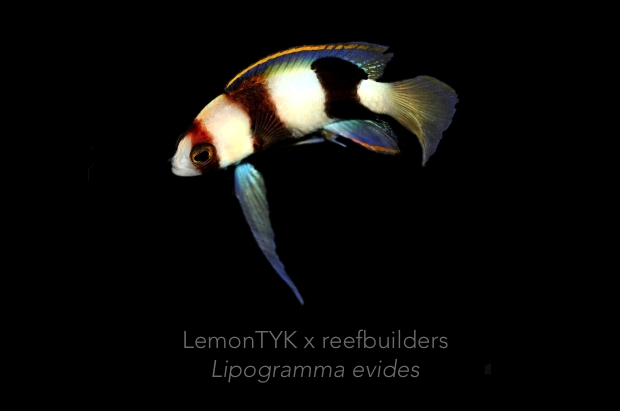Like an infinite looping paradox, we yet again find ourselves dealing with a deluge of deepwater Curacao fish that would be criminal if we did not at least feature briefly. While it’s usually the more charismatic and regalia clad Liopropoma and Prognathodes that get all the glory, let’s not forget that Curacao has more than that to offer. Lavishly designed and patterned are some of the smaller inhabitants of the deep, and this three part series will shed light on some of them. Dynasty Marine is solely responsible for a number of these Curacaoan beauties, many of which can be found nowhere else. In this post we explore two icons of the Lipogramma genus, the monochromic L. evides and the pastel purple L. klayi.

Lipogramma is a genus of small basslets maxing at sizes just below three inches. Out of the eight or so known species, only four has entered the trade with one undescribed species being exceedingly rare. L. trilineatum, L. evides and L. klayi are the species most often encountered, with the latter two being more expensive. All Lipogramma species are confined to deepwaters of the new world, namely the Western Central Atlantic Ocean.
Lipogramma evides is a delicate little basslet that rarely gets over an inch in length. In this beautiful species, the ground colour is bone white adorned with three black vertical bands. The first one passes through the eye and the last sits just shy of the caudal peduncle, invading the dorsal fin just slightly. The median fins are hyaline but tinted in sapphire, with the dorsal and anal fins outlined in orange along the leading edges. L. evides is remarkable for possessing a pair of exaggerated ventral fins which often exceeds the length of the anal fin.
It should be interesting to note that there is another similarly coloured fish nestled within the evides complex that could one day end up being separated as a distinct species.

Lipogramma klayi is perhaps the most beautiful, and in this species the fish is two toned with the anterior portion a powder purple and the posterior region starkly contrasted in chrome yellow. The colour transition zone starts just around the seventh dorsal spine and is pixillated in reverse coloration on both regions. The colouration is superficially very similar to Gramma loreto, but L. klayi has a more iridescent quality and a more subtle, pastel appearance. The median and ventral fins are all hyaline and yellow washed, but the dorsal fin is sapphire tinted on the anterior half corresponding to the purple region of the body.
Both species are found in the same habitats, in depths exceeding 100m (300ft). They are fond of rubble and sandy banks just adjacent to steep vertical walls, and are often seen in pairs or small groups consisting of three to five individuals.

Lipogramma are shy and very cryptic in the wild, preferring to skulk around loose rubble and shells. They do pretty well in captivity provided the same conditions are offered, in dim and peaceful set ups preferably in cooler waters. Because of their incredibly small and delicate form, very careful handling and acclimation has to be done initially, but once settled down in an optimum habitat they will display their curious and graceful nature that all Lipogramma are known for.
Unfortunately, these fish belong to a clade of upper tiered basslets only for really die hard fanatics. Costing well above four digits and measuring in at less than an inch, these are not something for the average every day hobbyist.



